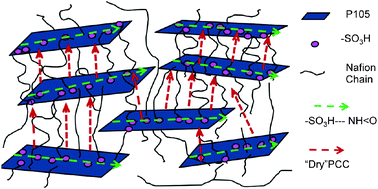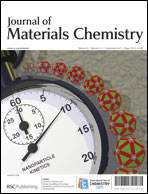Doping Nafion® matrix by p-aramid flakes for a proton transport less reliant on moisture†
Abstract
Dispersion of a low dose of oligomeric poly(p-phenylene terephthalamide) (PPTA) flakes (∼20 nm) in a matrix of Nafion® causes a reduction in glass transition temperature and storage modulus of the membrane. This matrix-softening phenomenon is attributed to the adsorption of Nafion molecules to the PPTA nanoflakes, which makes the Nafion matrix become less hydrophilic according to


 Please wait while we load your content...
Please wait while we load your content...